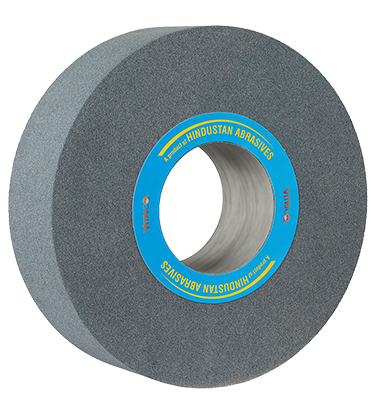Why Use Vitrified Bond for Grinding Wheels?
A grinding wheel has three components:
- Abrasive grains that do actual cutting.
- Bond which holds together the abrasive grains in the wheel while they cut and releases grains when they become dull, so as to provide new sharp grains.
- Structure which is the void or air space left between adjacent grains coated with bond, so as to provide chip clearance.
There are 5 Main Types of Bond in Grinding Wheels
Let’s dig deep inside bond types used for grinding wheels
- Vitrified Bond
- Resinoid Bond
- Rubber Bond
- Shellac Bond
- Oxychloride (Magnesite) Bond
Vitrified Bond
The term “vitrified” in its simplest form means “glassy” or “glass bond”. Abrasive materials such as aluminium oxide, silicon carbide, diamond and CBN are mixed with glass frit and other ceramic material like (clays, feldspar, etc…).
Blended mixtures are then pressed and sintered .On sintering, the glass and ceramic components are fused and melted together hard vitrified bond that holds the abrasive material in place.

Explore Our Wide
Range of
Vitrified Bonded Grinding Wheels
Why use vitrified bonded grinding wheel?

The vitrified grinding wheels have high levels of porosity in their structure. Porosity carries coolant through the grinding zone and provide space for chip clearance. By providing space to remove grinding swarf, the grinding wheels are able to grind faster.
Vitrified grinding wheels can remove the heat generated during grinding much more efficiently thus allowing faster grinding cycle times and less thermal damage to heat sensitive materials. Vitrified bonded wheels are also capable of high rate of stock removal in precision grinding operations.
The rigidity of the vitrified bonded wheels helps in form retention and attainment of high precision. This bond is not affected by high temperature uses or by water or oils. The majority of precision grinding operations are performed with vitrified wheels.

Featured Product
Abrasives Surface Grinding Segments
Hindustan surface grinding Segment are a universal choice for all those customers for heavy, rapid stock removal and production work. These Segments can easily handle tolerance operations and are generally preferred in such uses only.

